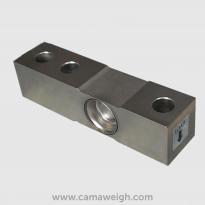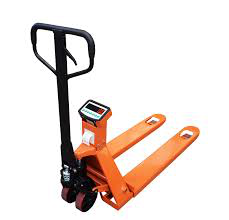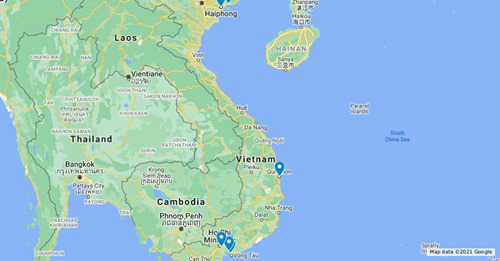
Introduction to Vietnam
- Vietnam has a population of 96.46 Million
- Capital: Hanoi
- Official language: Vietnamese
- Total Area: 331,212 km2
- Currency: Vietnamese dong
Economic Statistics of Vietnam
Economic Overview:
- Vietnam is the 4th largest economy in Southern Asia.
- Vietnam has a GDP of $262 billion
- The largest Vietnam industries are: Crude oil, Textile, Cigarettes and Tobacco, Rubber, Chemicals, Electrical goods, Electricity, Plastic, Paper, Energy, Cement, and Steel production.
Economy breakdown:
- Services 51%
- Industry 33%
- Agriculture 15%.
Main importers of Vietnam’s goods:
- China 29%
- Korea 19%
- Japan 8%.
- USA 6%
- Thailand 5%
Main exporters to Vietnam:
- China 16%
- Japan 8%
- USA 23%.
- Japan 8%
- Hong Kong 3%
The Manufacturing Industry of Vietnam
The manufacturing industry contributes to Vietnam’s economic growth yearly by about 17% in GDP. Vietnam's manufacturing sector is supported by the robust domestic demand for its products, export-oriented manufacturing, and its ability to secure new export orders. The production of high-quality goods, such as textile, computers, and machinery tools, has also helped increase the demand for Vietnam's products. All these factors combined have led to an increase in employment opportunities, salaries, and wages in Vietnam.
Some of the manufacturing Sub-sectors include:
- Textile and Garment:Vietnam is the fourth largest exporter of textile after China. This sector accounts for 16% of the manufacturing sector’s GDP and employs 2.7 million people, accounting for more than 12% of the country’s workforce and an estimated 5% of the total workforce in Vietnam. The industry’s products are sold locally and in over 180 countries globally. Some of the equipment that Camaweigh trades are:
- Timber and Furniture: Vietnam is the second-largest manufacture of furniture in the world. It produces a range of furniture, such as outdoor furniture, office furniture, domestic and non-domestic furniture. 65% of the industry’s total production is sold abroad. The timber and furniture industry uses different weighing scales such as:
- Movable Truck Scales/Portable Weighbridges
- Heavy-duty crane scales
- Pallet track scales
- Counting scales
- Load cells
- Electrical Machinery/Appliances:Vietnam’s electrical machinery and appliances industry has grown steadily since 2010, accounting for an estimated 36% of Vietnam’s total exports. Between 2001 to 2019, Vietnam’s electrical machinery industry export revenue grew from 47th place to 12th place internationally. The industry employs an estimated 2.5 million workers.


To buy, click on the product name: Thermal Printers and Load Cells. These scales are used in different industries from banking to manufacturing. The load scale is a digital weighing scale.

To buy, click on the product name. Pallet truck scales are used to measure the weight of goods while being transported.
The Transport and Logistics Industry in Vietnam
Given the economic growth of Vietnam, the demand for weighing scales in Vietnam’s transportation and logistics services is diverse and expected to increase.
Transportation, logistics, and shipping rely on weighing scales and weighbridges to ensure the goods' accuracy and safety.
There has been a rise in consumer spending and demand both in the domestic and global markets. Improved infrastructure, including both the exports and import routes, indicates that more weighing scales will be required in the future to ensure proper standards are well maintained.
In 2020, Vietnam’s logistics sector, through its government, was expected to upgrade most of its existing airports and to develop new airports with a total investment of USD 13.4 billion, with a clear forecast to grow the government spending on infrastructure development.
Types of Weighing Systems Used in Transportation and Logistics Industry:
These types of weighing Scales are applied to many kinds of industries, such as shipping, construction, agriculture logistics, and vehicle.
- Portable Truck Scales
- Vehicle Scales
- Dynamic Axle Weighing Scales
- Crane Scales
- Wireless Portable Weighing Pads
- Weighbridge Truck Scales
- Floor Scales
- Traffic Scales
Sea Ports and Trading Hubs of Vietnam
Vietnam is accessible by both land and sea.
For international trading, the main seaports in Vietnam: Hai Phong Port, Vung Tau Port, Van Phong port, Quy Nhon port, Quang Ninh port, Saigon port, and Cuo lo port.
When exporting products to our clients in Vietnam, Camaweigh uses the largest and busiest port of Hai Phong port.

What Weighing Scale Does Vietnam Import?
Some of the leading weighing Scales that Vietnam also imports include:
- Crane scales
- Industrial Weighing products
- Laboratory Scales
- Medical Scales
- Intelligent Weighing System
- Hydraulic Load Cells
- Test Weights
What regulations are there on importing equipment to Vietnam?
When importing weighing scales, Vietnam’s customs office will ask the importer to pay import tax and value-added tax of about 5% or 10% of the product’s value. Also, every importer will be required to present the following documents to the custom's authorities:
- Certificate of origin
- Import permit of restricted goods
- Cargo release order
- Delivery order
- Packing list
- Declaration form
- Terminal handling receipts
- Document of inspection
- Bill of landing
- Health and technical certificate
- Commercial invoice
- Insurance certificate
- Letter of credit
- Manuals
- Custom taxes to be paid before the release of goods
- Permits
Camaweigh will make sure to handle all logistic and documentation processes for your company and our worldwide clients.
Why should Vietnam import equipment?
Some of the weighing equipment that Vietnam import include:
- Availability – Customers require equipment in a timely manner, and sometimes, the local industries have limited capacity and availability.
- High Equipment Cost – Given domestic completion and high production and labor costs, equipment is more expensive to buy domestically and internationally.
- Equipment Quality - While most international equipment suppliers have a good brand reputation and quality products, some smaller domestic manufacturers can have alternative quality
Where Can I Buy Equipment for Vietnam?
Camaweigh has been exporting a wide range of weighing equipment to clients in Vietnam. Feel free to contact us at [email protected] or WhatsApp us at +86-131-2037-9271 for a FREE quotation.


 French
French Spanish
Spanish